What is Puppetry Art
Puppetry art in India is an excellent blend of culture, art, and oral history. This sacred tradition of puppetry art connects different ages and generations through history, works of fiction, and sociopolitical issues concerning the nation. Although there are challenges today, it is still flourishing, revealing its timeless beauty and moving tales.
What is the history of Puppetry art in India?
Puppetry art in India has a long and rich history. Its origins stretch back to the time when art and culture were deeply intertwined with storytelling. Over the centuries, it has undergone significant transformations while retaining its deep cultural significance. This enduring art form continues to connect the past with the present through its vibrant narratives.
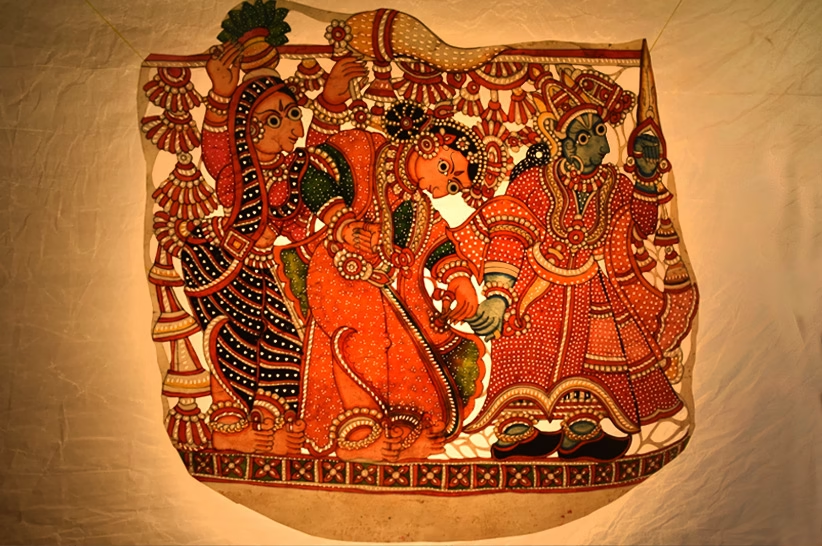
Puppetry in Ancient Texts
The use of puppetry in Indian epics dates back over two thousand years. While the Mahabharata references puppets metaphorically to depict divine acts by gods, it does not provide explicit details about their use. Puppets, often referred to as “puttalika” or “puttika” in Sanskrit, meaning “little dolls,” symbolized creativity and self-expression.
The epics like the Ramayana and Mahabharata significantly influenced puppetry narratives. These stories formed the backbone of performances, where puppeteers acted out epic tales to impart moral lessons and cultural values. This storytelling practice became an educational tool in an era when written literature was not widespread.
The Religious Connection
Puppetry also found its place within the realm of spirituality and religious practices. In many parts of India, puppets were used during temple rituals and festivals to enact stories of gods and goddesses.
In Odisha representing the divine love story of Lord Krishna and Radha might have been inspired by the famous Bhagavata Purana.
Rajasthan tradition’s Kathputli does bring out those lovely stories of the valors of the Rajput kings as it is pure entertainment coupled with valor and devotion. The shows of puppets were also offerings to deities that meant the devotion of the puppeteer as well as his skillful portrayal of mythological stories.
Folk Traditions and Traveling Puppeteers
Over the decades, puppetry has seated itself as an inextricable slice of folk culture, and this heritage got passed from one generation of dedicated puppeteer families to another. The families called Bhats in Rajasthan and Bommalattam artists in Tamil Nadu, treated puppetry as both a profession and a sacred duty.
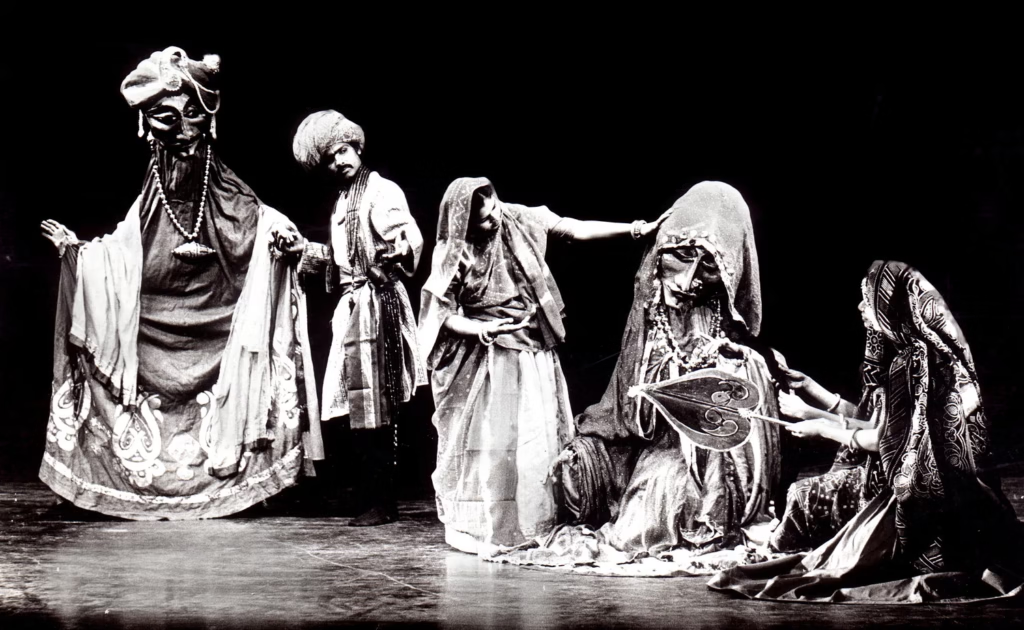
Village Performances: Puppeteers traveled to different villages and established stages in village markets, village squares, or courtyards of temples.
Adaptable Storylines: The stories told by puppet performers were relevant to them as they incorporated tales from the region, history, as well as the current events of their time.
Music and Narration: Performances were accompanied by live music, often with instruments like the dhol, tabla, or flute, while narrators provided dramatic dialogue and commentary.
What are some Diverse Forms of Puppetry in India?
India’s vast cultural landscape led to the emergence of different types of puppetry, each with its unique style and materials
String Puppetry (Kathputli): Hailing from Rajasthan, these are wooden puppets that use strings to be controlled and are also known for their colorful dresses and facial expressions.
Shadow Puppetry (Tholu Bommalata): In Andhra Pradesh and Kerala, this form of puppetry is found, which consists of a very detailed leather figure projected onto a screen that makes striking silhouettes.
Rod Puppetry (Putul Nach): In West Bengal and Odisha, the puppets are attached to rods and manipulated with great skill from below, offering a colorful and lifelike performance.
Glove Puppetry (Pavakoothu): In Kerala, glove puppets are used to enact episodes of the Ramayana and Mahabharata, where puppetry is well integrated with classical dance movements.
Puppetry in the Modern World
The arrival of modern entertainment like television and cinema, posed significant challenges to the survival of puppetry. However, efforts by cultural institutions, scholars, and enthusiasts have helped keep this art alive.

Government and NGO Support: The government and NGOs have initiated activities like workshops, festivals, and subsidies that have once again revived interest in puppetry.
Incorporation of Modern Themes: Puppeteers now address current issues like environmental conservation, health awareness, and digital literacy in their traditional performances.
Educational Outreach: Puppetry is increasingly being used in schools to teach youngsters about history, science, and social issues. Indian puppetry history perfectly captures its lasting appeal and adaptability. From the sacred courtyards of ancient temples to the lively celebrations of today, this colorful art form flourishes and captures the very essence of India’s cultural identity while simultaneously evolving to connect with modern audiences.
Connecting the Past with the Present: From its sacred origins in temple courtyards to modern stages and classrooms, puppetry art in India has proven its adaptability and timeless appeal. It bridges the gap between tradition and modernity, preserving cultural narratives while embracing new themes and challenges. Puppetry remains a testament to India’s ability to honor its heritage while evolving to connect with contemporary audiences.
Traditional Puppetry Forms in India
What Kind of Puppet Show India Can Offer Us?
A series of puppet forms are known to thrive in India, each presenting a different cultural heritage, variety of forms of storytelling, and manipulation techniques. One of the richest forms of puppetry in India is the marionette, aka string puppets, which are operated and manipulated from above using strings. It is primarily seen in states like Rajasthan, where colorful characters come to life thanks to some skilled puppeteers.
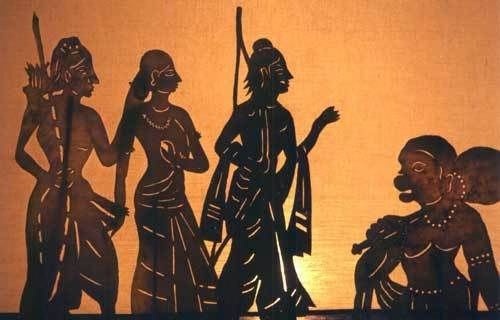
Shadow puppetry is yet another interesting tradition of puppetry in India, going back centuries. In shadow puppetry, flat figures cut from leather or some other suitable material are cast as shadows on the screen by some light source. Different styles of shadow puppetry are practiced in Andhra Pradesh and Odisha, and many of these performances still center on mythology and folklore.
Glove puppets are characterized by simple manipulation through glove control by the hands of the puppeteer. They are mainly found in regions of Kerala, often depicting local legends and moral tales; and in an interactive engagement, a direct rapport between puppeteer and audience is established.
Rod puppetry is another component of India’s vast and ever-evolving landscape of puppet theatre. Operated by means of rods attached to various points of the puppet’s body, such puppets can be moved in an explosive array of expressive motion. This type can be seen all over India in performances that include a thematic range from folklore to contemporary new issues.
Folk art puppetry encompasses all forms as it engages in time-honored charms of tradition in Indian culture. Each style not only entertains but also serves as a significant vehicle for the preservation of historical narratives and the transmission of social values from one generation to another.
What are Puppetry arts Cultural and Social Significance?
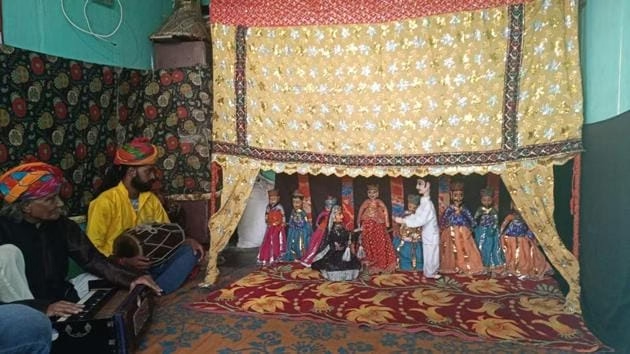
Puppetry is of profound cultural and social significance, especially in countries like India, where it is an educational tool across generations. Puppetry has, for centuries, had its relevance with regards to the preservation of ancient storytelling traditions and for the education of the population about such stories while replenishing cultural inheritance. Through vibrant returns, puppeteers mesmerize audiences with tales that reflect their socio-cultural value systems and historical events.
Besides, puppet shows serve as a catalyst for creation by gathering people to a shared experience. The puppet shows often take place during festivals or local festivities, which bonds the participants and strengthens their sense of belonging. The interactive nature of puppetry encourages participation by members of the audience in the process, thereby giving a proper coat of unity and grand celebration.
In addition, puppetry goes beyond social commentary as a means of redress. Many contemporary puppet shows tackle pressing issues of environmental or social justice in their endeavors.
Evolution of Puppetry in India
As puppetry art continues to redefine itself with time, its evolution is one of endurance and creativity. Over centuries, this ancient art form has switched from a means of spiritual expression and education to a powerful voice in modern society. From beginning as a part of religious rituals and folk traditions, puppetry has come to embrace innovation through techniques, materials, and storytelling. The evolution is what keeps puppetry art alive and in sync with the pulse of contemporary Indian culture, bridging the bounty of its past and the dynamism of its present.
Major Puppetry Styles in Different Regions
Puppetry art is one of the most varied and interesting forms of storytelling, quite different depending on the area. With each region bringing to the stage its own unique style saturated in the profound and pervasive cultural traditions.
Kathputli is one of the most famous puppetry styles of Rajasthan, characterized by wooden string puppets manipulated with thread and bright fabrics. Kathputli performances often recount regional folk tales and local legends. The string is pulled by the puppeteer with deft fingers to bring to life these animated figures for the stunning movements.
Saura puppetry utilizes flat wooden figures painted bright colors and hails from Odisha. This form of theater is closely woven with local mythology and rituals and is performed, more frequently than not, during festivals or community celebrations. The stories recounted in Saura puppetry art present the dimensions of vast cultural landscapes.
Togalu Gombeyaata, shadow puppet theatre, asserts itself with backlit leather puppets telling story upon story of epics such as the Mahabharata and Ramayana. Usually accompanied by live music, performances are noticed for their visual appeal.
Bommalattam of Tamil Nadu represents another traditional puppet theatre characterized by marvelous wooden marionettes. With beautiful costumes, the plays are combined with narratives in ways that embody Tamil folklore and social issues; so it ends up being entertaining and thought-provoking.
Another flavor of puppetry art is added to West Bengal’s Putul Nautch. Here, puppet manipulation is combined with dance in retelling stories from the Bengali culture. Put on in the chase of animated colorful characters, the acts of Putul Nautch displays their expressive movements to keep the audience engaged.
These regional styles bring out the richness of puppetry art around the world and the great local stories connect everyone in the broader commonalities of togetherness of audiences.
Role of Women in Indian Puppetry

While reviewing distinct forms of puppetry spread across regions, one cannot forget the contribution that women have made to this traditional art form. Women have played a significant role in the preservation of puppetry art; they were oftentimes skilled narrators, costume designers, and performers. In the family of puppetry, the women were in charge of creating sophisticated puppets and composing entertaining storylines, merging creativity with cultural authenticity. Their participation has not only enhanced the puppetry art but ensured its survival as a living tradition handed down from generation to generation.
Challenges Faced by Puppeteers
Despite the glorious history and cultural significance of puppetry art in India, there are emerging challenges. Youth redirect their interest towards modern entertainment theater, films, and digital media. Viciously compounded with economic trouble, many puppeteers find it hard to sustain their living with an inconsistent source of income. Furthermore, the lack of legal recognition of puppetry as an art form means that there is little or no institutional support or audience visibility.
Skill transfer is another big challenge. As more youngsters are attracted toward more lucrative career options, the art and skills to make and perform puppetry art are likely to die out. Also, the limited availability and high cost of traditional materials for making puppets are imposing further economic weight on puppeteers.
Moreover, along with the commercialization of cultural events, any traditional art form including puppetry is usually ignored, making it more difficult for puppeteers to find platforms for their work. Apart from any performing arts school, there is little chance for linear disseminating of knowledge, and puppetry therefore runs a grave risk of extinction.
Doing the groundwork for its sustenance will require major educational programs, workshops, and public performances. Collaborations between traditional puppeteers and modern-day artists could serve as a key to revitalizing the puppetry art in a modern setting while conserving the historical essence.
Reviving Puppetry in the Modern World
While modern times pose several challenges, the puppetry art in India is being revived through innovative strategies and collaborations between traditional storytelling and modern contemporary relevant instruments.
Incorporating Contemporary Themes: Puppeteers began incorporating modern tales and contemporary subjects in their performance, from climate change and gender equity to digital literacy. These themes serve to connect puppetry art even more to the young audience, ensuring its ongoing popular appeal.
Collaborations with Artists and Filmmakers: Closely working with visual artists, filmmakers, and theater professionals has shaken a new world for puppetry art. These partnerships open new avenues for puppetry art to address modern storytelling techniques and media while reaching new audiences.
Workshops and Education: Cultural organizations and schools are holding workshops to impart puppetry art’s subtle arts to students and enthusiasts. The workshops may create a lot for the survival of the traditional; they could also be an area for experimentation with technology and new materials throughout the education business.
Digital Platforms: Social media and other digital platforms have provided the tools to puppeteers to make their work accessible to global audiences. With interesting online content and clips, the puppeteers pull in fresh fans while simultaneously keeping alive the art of puppetry.
Government and NGO Support: Government bodies and NGOs play an essential role in the revival of puppetry art. Acts such as the establishment of financial aid schemes, festivals, and awareness campaigns are establishing a supportive environment that allows puppeteers to thrive.
It’s all those innovations that are keeping puppetry art alive-though it shall not kneel down, simultaneously it’s sitting on the cusp of an evolutionary process while keeping its essence of antiquity. Stringent policies will debar the art from maturing in warmth, light, and love.
For further reading on significance of Puppetry Arts, you can visit these useful resources:
Check out our Blog Page on Traditional Indian art.

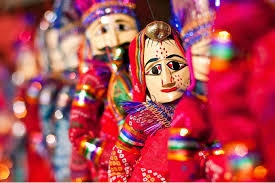

Leave a Reply